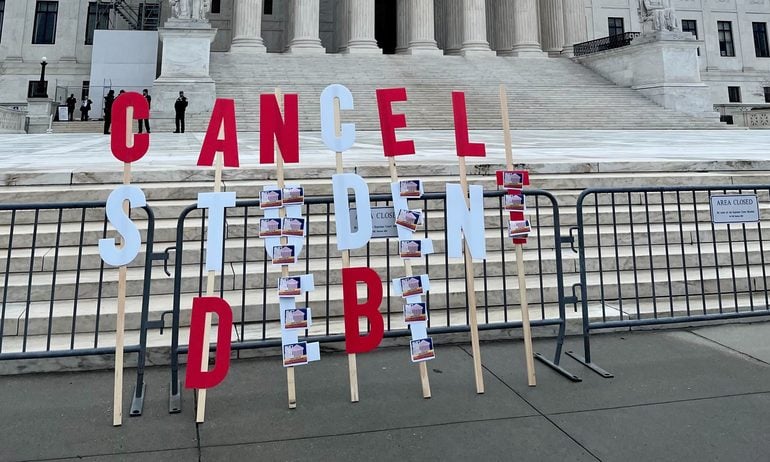Biden Student Loan Forgiveness Ends: What’s Next For Borrowers?
Biden forgave $183.6 billion in student loans for five million people while in the White House. Trump isn't likely to continue this legacy — but borrowers still have relief options.

Many, or all, of the products featured on this page are from our advertising partners who compensate us when you take certain actions on our website or click to take an action on their website. However, this does not influence our evaluations. Our opinions are our own. Here is a list of our partners and here's how we make money.
During his final days in the Oval Office, former President Joe Biden abandoned the ‘plan B' of his broad student debt cancellation plan, which the Supreme Court blocked in 2023. This alternate forgiveness plan already faced legal challenges and was likely to fail under the new Trump administration.
In paperwork filed on Dec. 26, Biden's Education Department cited “operational challenges” as the reason for withdrawing the proposal, which would’ve eliminated accrued interest for 23 million borrowers. The plan also aimed to forgive debt for people facing financial hardships, like expensive childcare or healthcare.
Still, Biden forgave $183.6 billion in student debt during his administration.
You must make other plans for repaying your student debt if you were counting on plan B relief. President Donald Trump administration is likely to be less lenient toward student loan borrowers, and it may roll back affordable repayment plans or other forgiveness programs.
Existing student loan forgiveness programs to consider
Though Biden’s 'plan B' is off the table, you may still qualify for an existing federal student loan forgiveness program. Many of these programs help longtime borrowers or those in certain professions, like teachers, nurses, government employees and other public service workers. These programs still exist under the Trump administration.
Public Service Loan Forgiveness (PSLF). Forgives remaining student debt after 10 years of making payments and working full-time for a qualifying nonprofit employer.
Income-Driven Repayment (IDR) forgiveness. Forgives remaining student debt after 20 or 25 years of payments made on an income-driven repayment plan.
Teacher Loan Forgiveness. Forgives up to $17,500 after five years of full-time work at a qualifying low-income school.
Borrower defense to repayment. Loan forgiveness and payment refunds for borrowers who were defrauded or misled by their school.
The Biden administration also wrapped up its IDR waiver program in mid-January. This one-time student loan payment recount forgave longtime borrowers’ debt and moved millions more closer to the IDR forgiveness finish line, even if they weren't previously enrolled in an IDR plan.
Other ways to get student loan relief right now
Consider student loan deferment or forbearance if you need immediate, short-term relief. These options allow you to postpone payments, but you could wind up paying more money over time if interest accrues during your payment pause.
If you skip payments without requesting a deferment or forbearance, you could face student loan default. Federal student loans default after a payment is at least 270 days overdue. This can result in collection costs, hits to your credit score, calls from debt collectors and wage garnishment.
For personalized repayment help, start by calling your student loan servicer. A customer service representative can walk you through your options. For further assistance, reach out to a nonprofit student loan help organization. Avoid companies that ask you to pay a fee upfront, as these can be student loan scams.
» MORE: How to get student loan help
How much student loan debt did Biden forgive?
Even without the 'plan B,' Biden’s Education Department forgave $183.6 billion in student debt for more than five million borrowers during his four-year administration.
As of Jan. 14, 2025, that forgiveness tally included:
$78.46 billion for 1,069,000 PSLF borrowers.
$56.5 billion for more than 1.4 million borrowers through income-driven repayment, including the SAVE plan and the IDR waiver.
$29.9 billion for 1.7 million borrowers eligible for borrower defense or closed school discharges.
$18.7 billion for 633,000 borrowers with a total and permanent disability.

